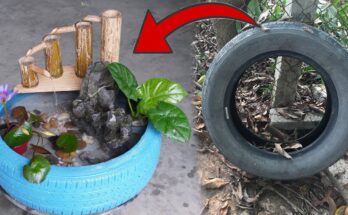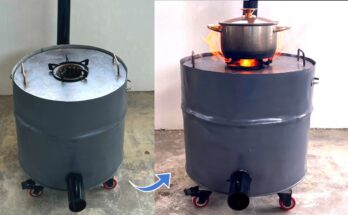Creating worms, or threaded helical grooves, on a lathe machine is a highly skilled task often considered challenging due to its intricate and precise nature. Worm gears are widely used in various industries for transmitting motion and torque between non-parallel shafts, which makes mastering this technique an invaluable asset for machinists. Here, we delve into the amazing thread drilling technique on a lathe machine and how it simplifies the otherwise difficult process of crafting worms.
Understanding Worms and Their Importance
A worm is a screw-like component with helical threads that mesh with a gear or rack. Its primary function is to transmit rotary motion at a specific angle, often reducing speed while increasing torque. Worms are commonly used in applications such as elevators, conveyors, and other machinery requiring precise motion control. Due to the complexity of their geometry, machining worms requires skill, precision, and the right tools.
The Challenges of Worm Machining
Creating worms on a lathe involves threading, which can be challenging for several reasons:
- Precision Requirements: The pitch and depth of the threads must align perfectly to ensure proper meshing with the gear.
- Tool Setup: Setting up the lathe for threading requires meticulous alignment and calibration.
- Material Constraints: Harder materials demand specific cutting speeds, tools, and techniques to avoid damage or inaccuracies.
- Helical Angle: Achieving the correct angle for the helical threads demands careful adjustment of the lathe’s lead screw and gears.
The Amazing Thread Drill Technique
One of the most innovative methods for machining worms on a lathe is the use of a thread drill. This technique simplifies the process while maintaining accuracy and efficiency. Here’s how it works:
- Choosing the Right Thread Drill
Select a thread drill with the appropriate pitch and diameter for your worm specifications. The drill should be compatible with the material being machined. - Lathe Setup
- Adjust the lathe’s lead screw to match the desired thread pitch.
- Install the thread drill into the tool holder, ensuring it is securely fastened.
- Align the workpiece precisely with the lathe’s centerline to avoid eccentricity.
- Thread Cutting Process
- Start the lathe at a suitable speed, considering the material and thread drill specifications.
- Gradually feed the thread drill into the workpiece, following the lathe’s lead screw movement.
- Monitor the depth and alignment continuously to prevent deviations.
- Finishing Touches
After the initial threads are cut, use a finishing tool or file to smooth any rough edges and refine the thread profile. For hardened materials, consider using a coolant to prevent overheating.
Benefits of the Thread Drill Technique
- Efficiency: Reduces the time required to machine worms compared to traditional methods.
- Precision: Ensures consistent thread pitch and depth, vital for proper gear meshing.
- Ease of Use: Simplifies the setup process, making it accessible for machinists with varying skill levels.
Applications and Industry Impact
The thread drill technique is particularly beneficial for industries relying on custom worm gears, such as automotive, aerospace, and robotics. By streamlining the process, manufacturers can produce high-quality components in less time and at lower costs.
Conclusion
Machining worms on a lathe may seem daunting, but with the thread drill technique, it becomes a manageable and efficient task. This amazing approach not only enhances precision but also boosts productivity, making it an essential skill for modern machinists. By mastering this technique, you’ll unlock new possibilities in the world of precision engineering.


